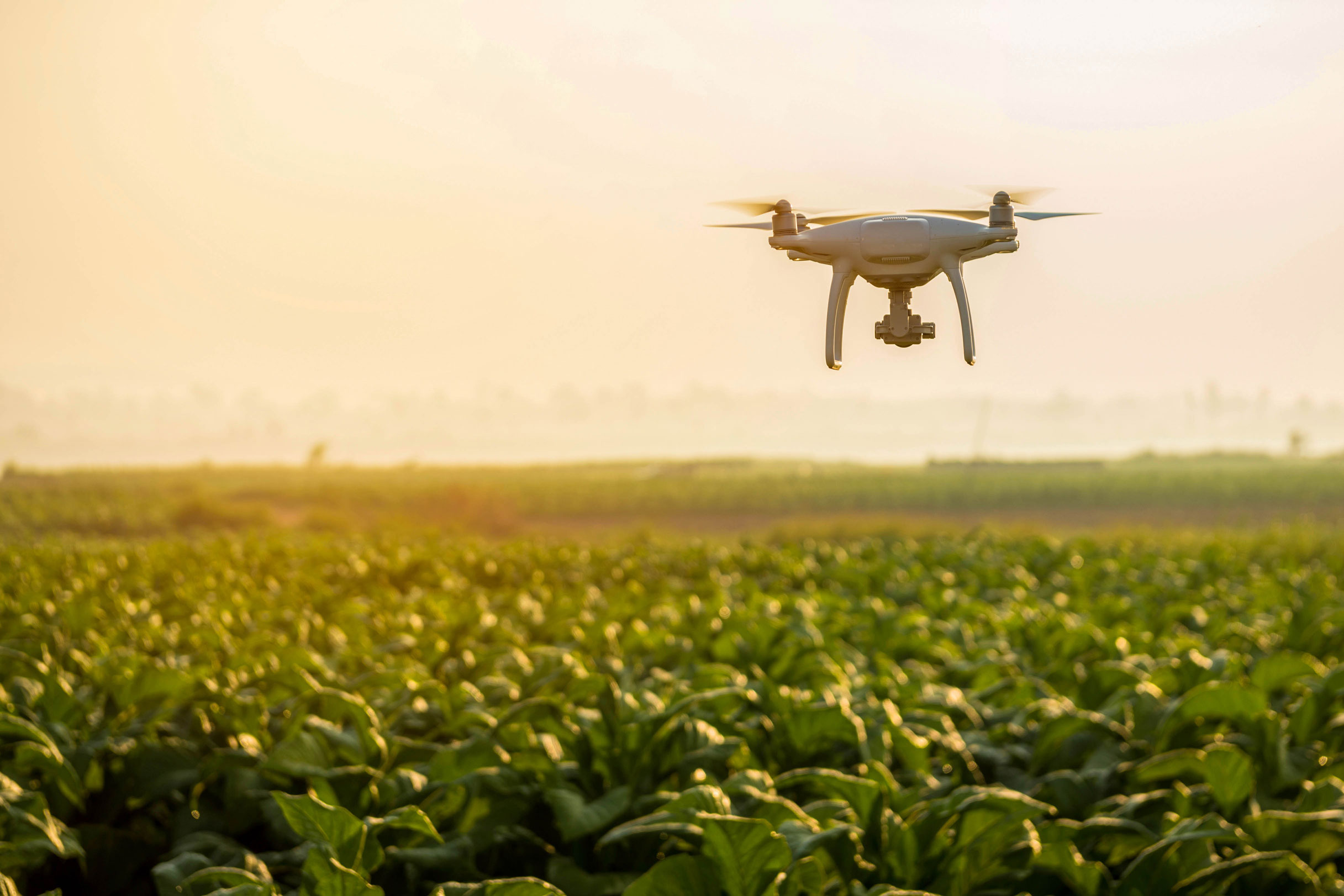
Since ancient times, agriculture has been a crucial human pursuit that helps meet our basic needs for sustenance and other essential commodities. Despite its significance in society, agricultural operations encounter numerous obstacles, including climate shifts, population surges, flora and fauna destructions, crop diseases, and unpredictable market swings. To efficiently navigate these challenges, farmers must embrace new technological innovations like employing an Agriculture Drone specifically designed to aid in farming activities with improved efficiency and output capabilities.
What is an Agriculture Drone?
Agricultural drone technology refers to a crewless aerial vehicle that carries out multiple tasks in agriculture. Its features, including sensors, cameras, GPS systems, controllers, or spraying mechanisms, may vary according to its type and function. These drones can perform activities such as mapping/surveying crops, amongst other things like monitoring plant health status using imaging and dispensing fertilizers/pesticides during the growth cycle of plants.
How Does an Agriculture Drone Work?
Agricultural drones are designed to collect data or perform various tasks by hovering above a farm or field. The collected data may include thermal maps, spectral maps, elevation maps, images, and videos. Meanwhile, these sturdy machines can execute agronomic actions such as fertilizing crops with pesticides and herbicide solutions along with water spraying for irrigation, leading to better harvest yields.
A software program regulates the data and operations, providing users with functionalities such as designing flight paths, tweaking camera configurations, scrutinizing the information gathered, and perfecting the procedures. It can also collaborate with other platforms or devices like artificial intelligence, cloud computing solutions, and the Internet of Things, enabling better integration across various tools for effective results.
What are the Benefits of Agriculture Drones?
Applying crewless aerial vehicles in agriculture has several advantages that promote sustainable farming practices and environmental conservation. Some examples of the benefits include:
-
Improved Productivity
The use of drones in agriculture is advantageous primarily because they enhance productivity. These devices can cover vast land areas promptly and provide high-quality data that can assist farmers in making better judgments. One instance where these machines come into play involves crop health analysis, whereby drones help recognize nutrient deficiencies, water stress indications, pest infestations, and diseases present, among others, so targeted remedies would be applied accordingly. Henceforth with such swift interventions, crop losses are minimized while yield increases significantly occur within the farming industry.
-
Reduced Pollution
In addition to their applications in precision agriculture and agricultural machinery, drones can assist in reducing pollution caused by conventional farming methods. Compared to tractors or planes, using drones for crop spraying offers the benefits of high accuracy. This contributes to decreasing the number of chemicals and water usage and less harmful effects on surrounding organisms as only affected areas could be directly targeted via pesticide application.
-
Lower Analysis Costs
It is important to note that they can also contribute to efficient cost management. Using uncrewed aerial vehicles for data collection and analysis imposes a less financial burden on farmers than traditional methods such as satellite imagery or ground-based surveys. With near-real-time drone data, farmers can monitor crop growth stages, soil moisture levels, weather conditions, and many other factors at a relatively lower cost than utilizing human-crewed aircraft or terrestrial survey teams. This facilitates better decision-making because timely information allows them to adjust their farming practices accordingly, improving yield quantity and quality while reducing expenses related to cultivation activities.
-
Increased Employment Opportunities
Drones have become an essential tool in modern agriculture, revolutionizing how farmers operate their farms. In addition to enhancing agricultural yields and improving crop health, drones can generate multiple employment opportunities across various sectors of the economy. With drone technology constantly evolving, more roles are being created for individuals interested in working with them. Job creation related to drones includes positions such as pilots who control and maneuver uncrewed aircraft around farmland while capturing valuable data through aerial photography or video footage. Drone technicians are another area where job openings exist – they carry out maintenance services on machinery that support effective drone operations by checking battery performance, assessing flight systems at pre-flight tests, or conducting repairs when necessary.
-
Adapted to Changing Climate
One advantage of employing agricultural drones is their versatility in responding to shifting climate patterns. Drones may assist farmers in dealing with the repercussions of global warming, including droughts, floods, heatwaves, and severe weather conditions, by delivering timely, precise information and solutions. For instance, they can aid agrarians in evaluating crop damage effectively; provide accurate estimates of losses incurred, translating into initiating prompt countermeasures such as applying proper irrigation or drainage systems while considering planting resilient crops that better tolerate changing climates.
How to Use an Agriculture Drone?
Farmers must adhere to specific recommended procedures to ensure the effective utilization of agriculture drones. These guidelines include the following:
- Selecting the suitable variety and version of crewless aerial vehicles based on your particular requirements and objectives is crucial.
- Gain knowledge on the safe and legal operation of drones, considering the regulations specific to your locality.
- Carefully strategize the course of your aircraft and refrain from flying above areas with high population density, habitats for exotic animals, and structures such as power lines or buildings.
- Make sure that the sensors and cameras are appropriately calibrated. It would also be wise to verify the battery level and weather conditions in advance.
- Securely gather and store your data while ensuring regular backups.
- Utilize suitable software tools and platforms to analyze your data.
- Apply your findings and recommendations to improve your farming practices.
Conclusion
Using uncrewed aerial vehicles in agriculture can be a valuable tool for farmers to enhance their agricultural yield, efficiency, and financial growth. Moreover, employing these drones could also curtail pollution, diminish analysis expenses, stimulate job opportunities, and improve resilience toward unpredictable climate change. However, successful implementation of drone technology requires careful selection of the right type and model suited to individual requirements by farmers along with safe as well legal operation guidelines, including proper route planning before take-off; sensor calibration for accurate data collection & storage followed finally by the adoption of appropriate software tools/platforms guiding informed decision-making culminating in enhancing their farming practices.
One crucial factor to consider when selecting a drone is its Agriculture Sprayer Battery. This component operates the spraying system and drone, so its quality can significantly impact performance and efficiency. To avoid complications during the operation, farmers should invest in a sturdy and dependable agricultural sprayer battery that satisfies their requirements.




